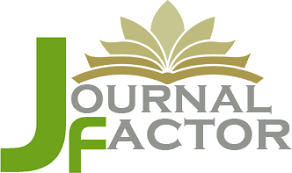Analgesic effect by using hot Plat and tail flick test in rats models for aqueuos moringa oleifer extract
DOI:
https://doi.org/10.54361/ljmr.17-21Keywords:
aqueous moringa oleifera extract, antinoceceptive, tail flick test, hot plat testAbstract
Introduction Drugs and plants are closely related to each other through the use of traditional medicines that is mainly prepared from plants. Plants are screened for presence of bioactive components responsible for the activity. Various types of plants have been used not only as dietary supplements but also as traditional treatments for many diseases. Moringaoleifera of Moringaceae is a potential source of phytochemical ingredients claimed to have analgesic property. Objective The present study aimed to investigate the analgesic activity of Moringaoleifera extract in albino rats by using taıl flıck and hot plat test. Methods: Leaves of Moringaoleifera were collected April 2022 from Surman (Libya). And then the powder was macerated in 1 L of distilled water for 3 days and evaporated to dryness by rotary evaporator. The crude extract was administered by oral gavaging in doses (50mg/kg_100mg/kg). The study was done by using experimental models, the albino rats were divided into 4 groups, each group consisting of 3 rats. Group I: Control (dH2O given orally at 2 ml/kg); Group II: Standard (100 mg/kg of Panadol orally.); Group III, IV, (MOE 50, 100 mg/kg, respectively), the analgesic effect was evaluated by using taıl flıck and hot plat test, through the reaction time was recorded in various time intervals) 60, 90, and 120 minutes). Results: MOE significantly a high significant increase in latency response (P<0.001) in comparison to control and standrad. Conclusion: These results indicate the ability of MOE to inhibit thermally induced nociceptive processes, which is a characteristic of strong analgesics
Downloads
References
Rhiouani H, El-Hilaly J, Israili ZH, Lyoussi B. Acute and subchronic toxicity of anaqueous extract of the leaves of Herniariaglabra in rodents. J Ethnopharmacol 2008;118(3): 378-86.
Khalafalla MM, Abdellatef E, Dafalla HM, Nassrallah AA, Aboul-Enein KM, et al. (2010) Active principle from Moringaoleifera lam leaves effective against two leukemias and a hepatocarcinoma. Afr J Biotech 9: 8467–8471.
Iqbal S, Bhanger MI (2006) Effect of season and production location on antioxidant activity of Moringaoleifera leaves grown in Pakistan J Food Compos Anal. 19: 544–555.
Wood M (1997) The book of herbal wisdom: Using plants as medicine: North Atlantic Books press. p.374.
Oliveira JTA, Silveira SB, Vasconcelos KM, Cavada BS, Moreira RA (1999) Compositional and nutritional attributes of seeds from the multiple purpose tree Moringaoleifera Lamarck. J Sci Food Agric 79: 815–820.
Fahey JW (2005) Moringaoleifera: a review of the medical evidence for its nutritional, therapeutic, and prophylactic properties. Part 1. Trees for Life Journal: a forum on beneficial trees and plants. 1: 5 http://www.TFLJournal.org/articl e.php/20051201124931586.
Fuglie LJ (1999) The Miracle Tree: Moringaoleifera: Natural Nutrition for the Tropics. Church World Service, Dakar. Revised in 2001 and published as The Miracle Tree: The multiple attributes of Moringa, 68,172.
Paliwal, R., V. Sharma, Pracheta and S. Sharma, 2011. Elucidation of free radical scavenging and antioxidant activity of aqueous and hydro-ethanolic extracts of Moringa oleifera pods. Res. J. Pharm. Tech., 4: 566-571.
Dahanukar, S.A., Kulkarni, R.A., Rege, N.N., 2000. Pharmacology of medicinal plants and natural products. Indian Journal of Pharmacology32, 81–S118.Frank M. M., Fries L.F., Immunol. Today 12 (1991) 322.
Mughal MHS, Ali G, Srivastava PS, Iqbal M (1999). Improvement of drumstick (Moringa pterygosperma Gaertn.) A unique source of food and medicine through tissue culture. Hamdard Med. 42:37-42.
Anwar, F., S. Latif, M. Ashraf and A.H. Gilani, 2007. Moringa oleifera: A food plant with multiple medicinal uses. Phytother. Res., 21: 17-25.
Yadu ND, Shankhajit D, Ajoy KG. Evaluation of Analgesic activity of methanolic extract of Amorphophalus paeonifolius tuber by tail flick and acetic acid- induced writhing responsemethod. Int J Pharm Biosci 2010;1:662-8.
Kitchen I, Crowder M. Assessment of the hot-plate antinociceptive test in mice. A new method for the statistical treatment of graded data. J Pharmacol Meth 1985; 13: 1–7. http://dx.doi.org/10.1016/0160- 5402(85)90063-4
Tripathi KD. Essentials of Medical Pharmacology. 5th edition. New Delhi, India: Jaypee Brothers Medical Publishers; 2004. [Google Scholar]
Shreedhara CS, Vaidya VP, Vagdevi HM, Latha KP, Muralikrishna KS, Krupanidhi AM. Screening of Bauhinia purpurea Linn. for analgesic and anti-inflammatory activities. Indian Journal of Pharmacology. 2009;41(2):75–79. [PMC free article] [PubMed] [Google Scholar]
Wigdor S, Wilcox GL. Central and systemic morphine-induced antinociception in mice: contribution of descending serotonergic and noradrenergic pathways. Journal of Pharmacology and Experimental Therapeutics. 1987;242(1):90–95. [PubMed] [Google Scholar]
Chapman CR, Casey KL, Dubner R, Foley KM, Gracely RH, Reading AE. Pain measurement: an overview. Pain. 1985;22(1):1–31. [PubMed] [Google Scholar]
Vogel H. Drug Discovery and Evaluation: Pharmacological Assays. Berlin, Germany: Springer; 2007. [Google Scholar]
Mangale S M, Chonde S G & Raut P D. 2012. Useof Moringa oleifera (Drumstick) seed as Natural Absorbent and an Antimicrobial agent for Ground water Treatment. Res. J. Recent Sci. 1(3): 31-40. gaoleifera-lam-miracle-tree
Sulaiman M R, Zakaria Z A, Bujarimin A S,Somchit M N, Israf D A & Moin S. 2008.Evaluation of Moringa oleifera AqueousExtract for Antinociceptive and AntiInflammatory Activities in Animal Models. Pharmaceutical biology
Manoj K, Thangavel S. Antiinflammatory and analgesic activity of stem bark of Moringaoleifera. Pharmacologyonline2011;3:641-50
Manaheji H, Jafari.S, Zaringhalam J, Rezazadeh S, TaghizadFarid R. Analgesic effects of methanolic extracts of the leaf or root of moringaoleifera on complete Freund’s adjuvant induced arthritis in rats. J Chin Integr Med 2011; 9(2):216-222. [PubMed]
Nitin G. Sutar, V.V. Patil S.B. Narkhede, A.P. Patil R.T. Kakad , T.A. DeshmukhR.Y.Chaudhari V. R. Patil, C.G. Bonde. Analgesic activity of seeds of Moringaoleifera Lam. Internat J of Green Pharm 2008; 8(2): 108-110. http://dx.doi.org/10.4103/0973- 8258.41182
Manoj K, Thangavel S. Antiinflammatory and analgesic activity of stem bark of Moringaoleifera. Pharmacologyonline2011;3:641-50
Downloads
Published
Issue
Section
License
Copyright (c) 2023 Khaled Aburas, Akram Misbah, Hana Fehelbum, Asmahan Abukhdir (Author)

This work is licensed under a Creative Commons Attribution-NonCommercial-NoDerivatives 4.0 International License.
Open Access Policy
Libyan journal of medical Research (LJMR).is an open journal, therefore there are no fees required for downloading any publication from the journal website by authors, readers, and institution.
The journal applies the license of CC BY (a Creative Commons Attribution 4.0 International license). This license allows authors to keep ownership f the copyright of their papers. But this license permits any user to download , print out, extract, reuse, archive, and distribute the article, so long as appropriate credit is given to the authors and the source of the work.
The license ensures that the article will be available as widely as possible and that the article can be included in any scientific archive.
Editorial Policy
The publication of an article in a peer reviewed journal is an essential model for Libyan journal of medical Research (LJMR). It is necessary to agree upon standards of expected ethical behavior for all parties involved in the act of publishing: the author, the journal editorial, the peer reviewer and the publisher.
Any manuscript or substantial parts of it, submitted to the journal must not be under consideration by any other journal. In general, the manuscript should not have already been published in any journal or other citable form, although it may have been deposited on a preprint server. Authors are required to ensure that no material submitted as part of a manuscript infringes existing copyrights, or the rights of a third party.
Authorship Policy
The manuscript authorship should be limited to those who have made a significant contribution and intellectual input to the research submitted to the journal, including design, performance, interpretation of the reported study, and writing the manuscript. All those who have made significant contributions should be listed as co-authors.
Others who have participated in certain substantive aspects of the manuscript but without intellectual input should only be recognized in the acknowledgements section of the manuscript. Also, one of the authors should be selected as the corresponding author to communicate with the journal and approve the final version of the manuscript for publication in the LJMR.
Peer-review Policy
- All the manuscripts submitted to LJMR will be subjected to the double-blinded peer-review process;
- The manuscript will be reviewed by two suitable experts in the respective subject area.
- Reports of all the reviewers will be considered while deciding on acceptance/revision or rejection of a manuscript.
- Editor-In-Chief will make the final decision, based on the reviewer’s comments.
- Editor-In-Chief can ask one or more advisory board members for their suggestions upon a manuscript, before making the final decision.
- Associate editor and review editors provide administrative support to maintain the integrity of the peer-review process.
- In case, authors challenge the editor’s negative decision with suitable arguments, the manuscript can be sent to one more reviewer and the final decision will be made based upon his recommendations.











